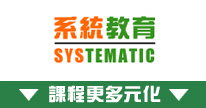| 本中心為 PRINCE2® 官方授權教育中心,課程以認可導師及教材教授。 |
推介服務:課堂錄影隨時睇 (在家觀看 = 0%,在校觀看 = 100%)
學員使用電話或本網頁報名,待本中心確認已為學員留位後,即可使用  繳付學費,過程簡便!
繳付學費,過程簡便!
* 各政府部門可使用 P Card 付款
如使用 P Card 繳付考試費,考試費需另加 1.3% 附加費
# 請注意:PRINCE2® 官方授權機構硬性規定,報讀 PRINCE2® 課程時必須同時繳交相應的考試費
費用 ($4,318 / $4,572 / $4,826 + $4,860) 已經包括考試所需的費用
注意! 客戶必須查問報讀學校的教育局註冊編號,以確認該校為註冊學校,以免蒙受不必要的損失!
| 本中心為 PRINCE2® 官方授權教育中心,課程以認可導師及教材教授。 |

PRINCE2 是一種在全球廣為認可的項目管理方法。它是一種系統化的項目管理方法,從眾多過去的項目中獲取洞見,並結合了來自多元持分者的知識和觀點,包括項目贊助人、項目經理、項目團隊、學者及顧問。
本中心的 PRINCE2® 7 Practitioner 國際認可證書課程認可導師 Franco 會用自行編制的 PRINCE2® 認可教材來授課,課程內容覆蓋 PRINCE2® 7 Practitioner syllabus 的所有內容,同時亦會針對考試重點來授課,使同學能通過考試。
| 課程名稱: |
PRINCE2® 7 Practitioner 國際認可證書課程
- 簡稱:PRINCE2 Practitioner Training Course |
| 課程時數: |
共 30 小時課堂 (共 10
堂) |
| 適合人士: |
已具備以下專業認證人士
PRINCE2® 7 (Foundation) 或
PRINCE2® 6th Edition (Foundation or Practitioner) 或
Project Management Professional (PMP) 或
Project Management Qualification (PMQ) 或
Project Professional Qualification (PPQ) 或
Certified Associate in Project Management (CAPM) 或
IPMA Level A (Certified Projects Director) 或
IPMA Level B (Certified Senior Project Manager) 或
IPMA Level C (Certified Project Manager) 或
IPMA Level D (Certified Project Management Associate)
|
| 授課語言: |
以廣東話為主,輔以英語 |
| 課程筆記: |
本中心導師親自編寫英文為主筆記,而部份英文字附有中文對照。 |
